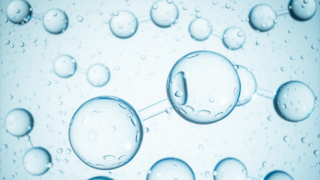Hydrogen as an energy carrier may in the future become a key element of a sustainable society, as a heat source, as well as for direct use in process industries and in the transport sector.
In the power sector, hydrogen may contribute as a source of flexibility in the power system. Norway's long industrial tradition, strong technology clusters and access to energy makes us well positioned to become a major producer and user of hydrogen.
During 2024 several hydrogen facilities were commissioned. Notably, Norway's first hydrogen plant dedicated to the maritime sector commenced operations on Kråkøya near Rørvik. In addition, Norwegian Hydrogen's facility in Hellesylt, adjacent to the Geirangerfjord, was brought into service and supplies hydrogen to local industry and the maritime sector. Yara's renewable hydrogen plant was likewise inaugurated at Herøya in Porsgrunn, where hydrogen substitutes natural gas as a feedstock. The commissioning of these facilities underscores the increasingly prominent role of hydrogen within Norway's renewable energy strategy.
The establishment of new hydrogen projects may, depending on the circumstances, require a construction permit under the Planning and Building Act. In addition, the construction and operation of hydrogen plants is subject to strict sectoral regulations under the Fire and Explosion Prevention Act with appurtenant regulations. The competent authority under the regulations is the Norwegian Directorate for Civil Protection (DSB). In some cases, a grid facility in connection with a hydrogen plant may also require a facility licence from the Norwegian Water Resources and Energy Directorate (NVE) under the Energy Act. Other than this, hydrogen production is not specifically regulated in Norwegian law.
Hydrogen and the EU renewables policy
Hydrogen is a crucial element of the EU renewables policy, and the European Commission presented a proposed framework for intensifying, inter alia, hydrogen development in March 2022.
In June 2023, the Commission adopted two delegated acts under the Renewable Energy Directive (RED), which establish rules on what may be defined as renewable hydrogen within the EU. The EEA Joint Committee is currently assessing whether these acts are EEA‑relevant and should therefore be incorporated into the EEA Agreement.
Under the applicable legal acts, hydrogen is deemed renewable if it is produced in a price area where average renewable electricity generation exceeded 90% in the previous year, and the share of hours in which hydrogen is produced during the year does not exceed that renewable share. Because most Norwegian price areas currently have renewable shares above 90%, hydrogen produced using electricity in Norway will generally qualify as renewable—unlike hydrogen produced in many other European countries. In those jurisdictions, hydrogen production must be tied to newly built generation capacity (the so‑called "additionality" requirement).
Thommessen is closely monitoring developments and actively addressing the critical factors in enabling Norway to succeed with its hydrogen strategy. We are also monitoring EU developments on an ongoing basis, with a focus on how the EU regulations will define the hydrogen production framework applicable in Norway, as well as on the implementation of such regulations in Norwegian law. We will provide a general outline of policy status for the Government’s current hydrogen strategy below.
The Government’s hydrogen strategy – what is the current status?
In Roadmap 2.0: The green industrial initiative from 2023, the government affirmed that hydrogen is a particular area of priority going forward. The following objectives were adopted:
- The government will help build a coherent value chain for hydrogen produced with low or no emissions, in which production, distribution and use are developed in parallel.
- The government will map market opportunities for hydrogen in Europe and examine the potential for exporting hydrogen from Norway through various production and distribution solutions. This has, among other things, been done through an external study that also considered how the state can best contribute to building a coherent value chain for hydrogen produced with low or no emissions, where production, distribution and use are developed in parallel.
- The government will contribute to the development of a market for hydrogen in Europe, inter alia by participating in relevant cooperation fora and programmes for hydrogen, by engaging in regulatory development for hydrogen in Europe as an EEA country, through research collaboration, bilateral cooperation with relevant countries, and by creating a national market for hydrogen.The government has carried out an external study that has contributed to a stronger technical basis for how the state can help build a coherent hydrogen value chain. State ownership as an instrument was part of the assessment. The report from the study was delivered in May 2023.
- The government will facilitate the establishment of socio-economically viable production of blue hydrogen, among other things through Gassco’s architect role, by allocating areas for CO2 storage pursuant to the storage regulations to stakeholders with storage needs, and by processing relevant applications for developments under the storage regulations quickly and efficiently.
- The government aims for Norwegian projects to be able to participate as quickly as possible in the upcoming hydrogen auctions under the EU Innovation Fund. The programme will provide ten-year support for the production of green hydrogen; the first call was planned to be held at the end of 2023 with a budget of €800 million.
Norway’s push for renewable hydrogen has been given momentum through support from the EU Hydrogen Bank, which supports renewable hydrogen production in EU and EEA countries. The funds are drawn from the EU Innovation Fund, which in turn is financed by revenues from the EU Emissions Trading System (ETS).
The first hydrogen auction was launched in 2023, with a total support framework of approximately NOK 8.5 billion. One of the companies that received nearly NOK 1 billion in support was the Norwegian company Skiga AS. The company, located in Skipavika in Gulen, produces renewable ammonia. Norwegian companies also distinguished themselves in the second round of the EU hydrogen auction. In May 2025 it was announced that three Norwegian companies — Norwegian Hydrogen, Gen2 Energy and Green H — were awarded a total of NOK 1.1 billion from the EU. The funds are intended for renewable hydrogen production in Rjukan, Mosjøen and Hammerfest.
The next hydrogen auction is expected to open before the end of the year, with a bidding deadline during spring 2026. The EU has indicated the budget will be €1 billion.
Please do not hesitate to contact us if you would like further information about how we work with hydrogen and the opportunities in this market.
Spotlight
Renewable energy projects towards 2030
Norway will need more renewable energy to succeed with the green shift and reach its target of reducing greenhouse gas emissions by 70-75 percent by 2035, compared to 1990. We invite you to learn more about our role in making sure future renewable development projects are successful.
Read more




